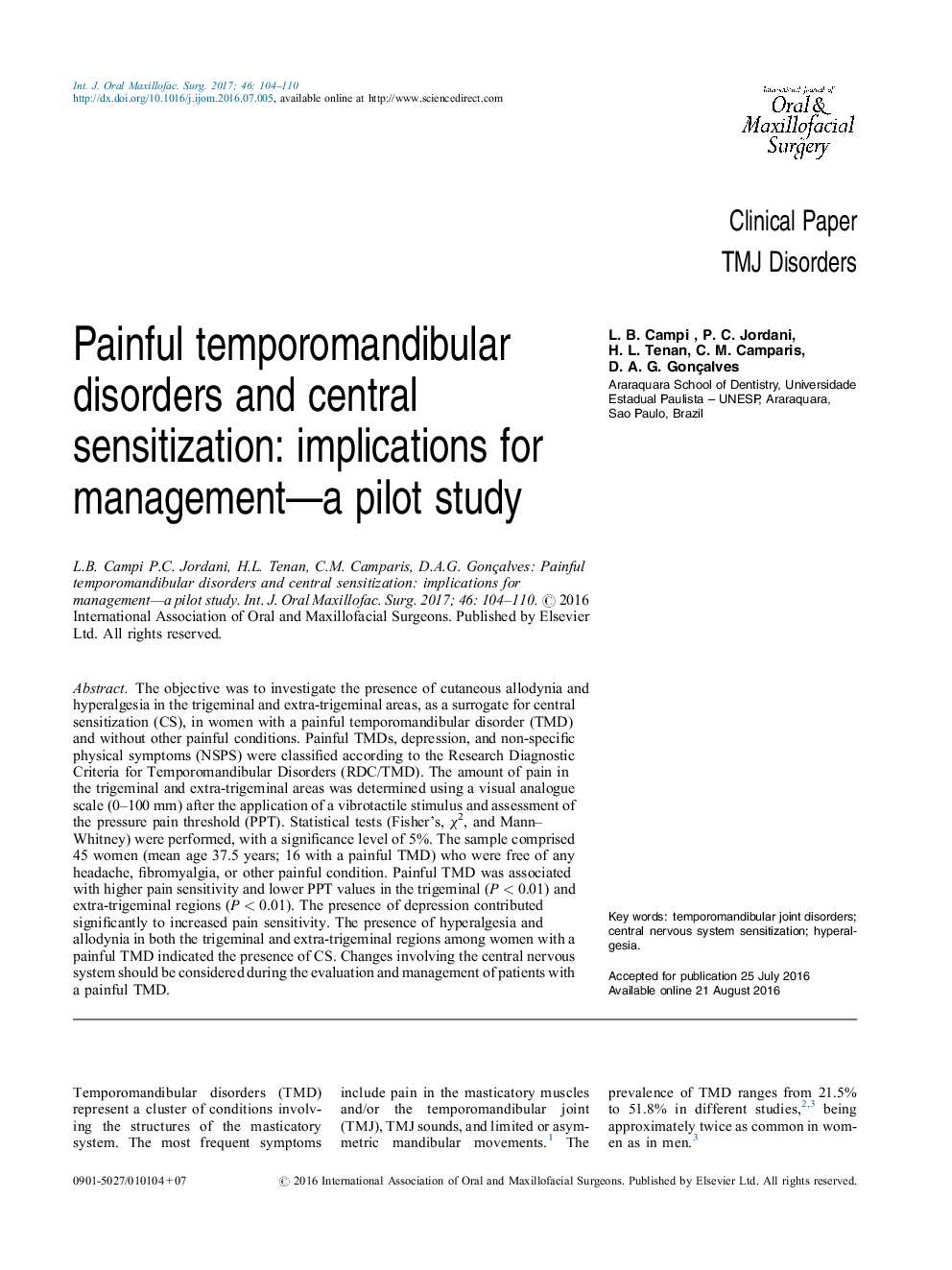| کد مقاله | کد نشریه | سال انتشار | مقاله انگلیسی | نسخه تمام متن |
|---|---|---|---|---|
| 5639064 | 1584108 | 2017 | 7 صفحه PDF | دانلود رایگان |
The objective was to investigate the presence of cutaneous allodynia and hyperalgesia in the trigeminal and extra-trigeminal areas, as a surrogate for central sensitization (CS), in women with a painful temporomandibular disorder (TMD) and without other painful conditions. Painful TMDs, depression, and non-specific physical symptoms (NSPS) were classified according to the Research Diagnostic Criteria for Temporomandibular Disorders (RDC/TMD). The amount of pain in the trigeminal and extra-trigeminal areas was determined using a visual analogue scale (0-100Â mm) after the application of a vibrotactile stimulus and assessment of the pressure pain threshold (PPT). Statistical tests (Fisher's, Ï2, and Mann-Whitney) were performed, with a significance level of 5%. The sample comprised 45 women (mean age 37.5 years; 16 with a painful TMD) who were free of any headache, fibromyalgia, or other painful condition. Painful TMD was associated with higher pain sensitivity and lower PPT values in the trigeminal (PÂ <Â 0.01) and extra-trigeminal regions (PÂ <Â 0.01). The presence of depression contributed significantly to increased pain sensitivity. The presence of hyperalgesia and allodynia in both the trigeminal and extra-trigeminal regions among women with a painful TMD indicated the presence of CS. Changes involving the central nervous system should be considered during the evaluation and management of patients with a painful TMD.
Journal: International Journal of Oral and Maxillofacial Surgery - Volume 46, Issue 1, January 2017, Pages 104-110
